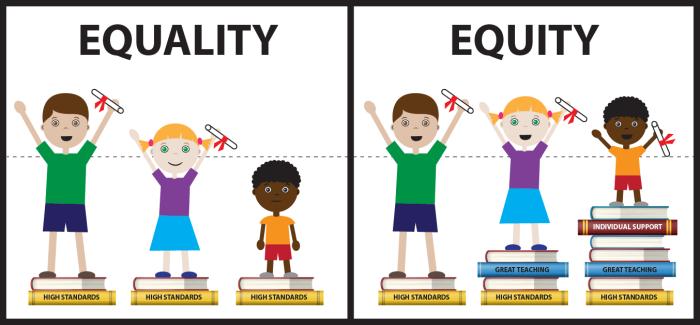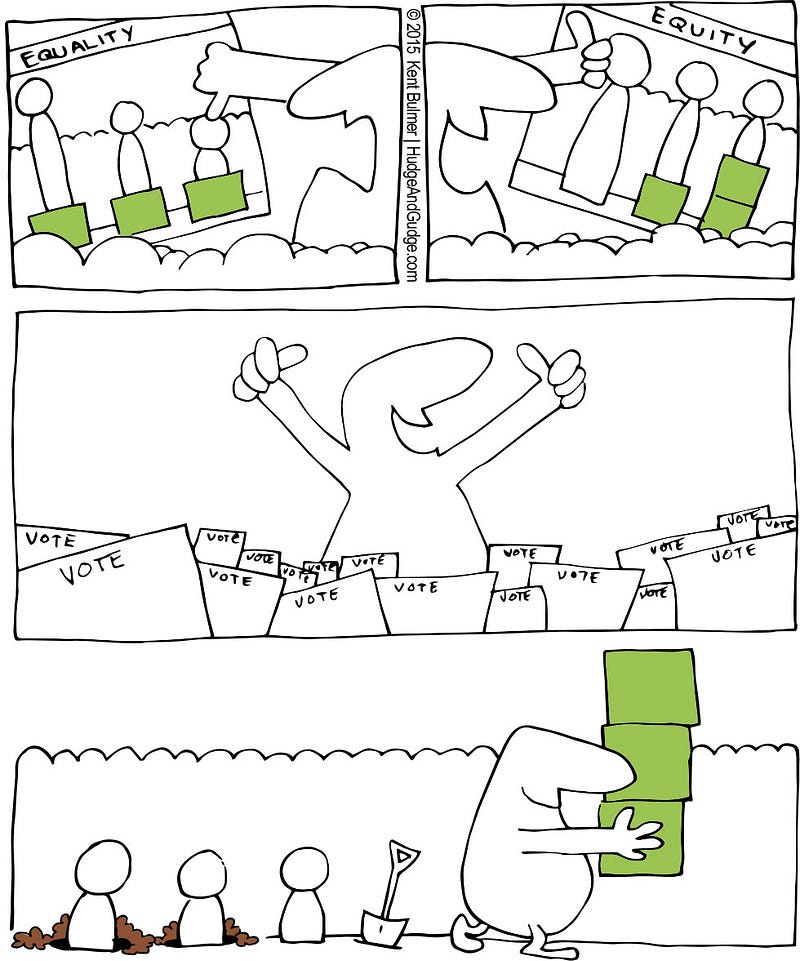
(The images in this blog are duplicated from Craig Froehle’s blog for the purpose of discussion here. They can be found at: https://medium.com/@CRA1G/the-evolution-of-an-accidental-meme-ddc4e139e0e4#.wtxbjbi5t)
In my Connected Learning class the above image has been the topic of much discussion. It reminds me of the power of sequential art to convey messages that would require far more words. It surprises me that the image has been used to convey ideas about so many diverse subjects, from ethical leadership to gender matters to literacy to healthcare and even to urban planning! The version whose message I feel is the clearest is the one my classmate Selvi first directed me towards in her blog:

If we think of the boxes as resources (Craig Froehle seems to suggest this), then I like the idea that resources first get distributed to help raise all parties to the same required level. Adding “liberation” to the meme reminded me that there was a barrier that existed initially which required resources to overcome. Removing the fence reminded me of engineering classes I have taken in the past where students were asked to provide creative solutions to existing problems. In this instance “thinking outside the box” became “thinking that doesn’t require boxes”.
The content of the boxes is questioned in two of the other interpretations. I applaud the boxes being labeled as books, especially the books that are labeled “great teaching” in this picture:

I believe that “high standards” and “individual support” should be chapters in the “great teaching” book and that all students should receive them.
Unfortunately, I feel that this next version (with green boxes representing wealth) is the most realistic representation given the current US political climate:

The fact that there is a wall in the comic strip does not seem coincidental…
My art skills are not up to the task of reinterpretation, but if they were I would have two suggestions for doing so. The first would be to have the tallest person lift up the shortest onto his/her shoulders so that they both might view the game. Two boxes could be used to allow the medium height person to see over the fence. This implies that either assistance (the boxes) or cooperation (the shoulders) could be two different ways to overcome the obstacle.
My second thought is to approach the fence from a STEM perspective. There could be a table to the left of the fence. The table would be labeled “science fair”, and a teacher could be seated at it with a box labeled “discovery”. The medium height person could be holding a saw and have a window cut out in front of him/her. The shortest person could be holding a phone and have a drone (with a camera attached) floating overhead. An alternate version could include a periscope.
A third idea might be a variation on the second where the 3 people work as a team to build a (science fair) battering ram that then knocks down the fence. This concept takes into account participation and social interaction, so it might be the most relevant of the three.
The common factor in all of the posted iterations is that the people have a desire to see (and thus feel included) in the game. This speaks of motivation and engagement. Labeling pictures with words such as “justice” and “fairness” promote the concept of egalitarianism, which when I Googled the definition for clarification reminded me that “all people are equal and deserve equal rights and opportunity”. These are ideas that will inform the development of my personal teaching style.
Thanks for reading!
-Eric L